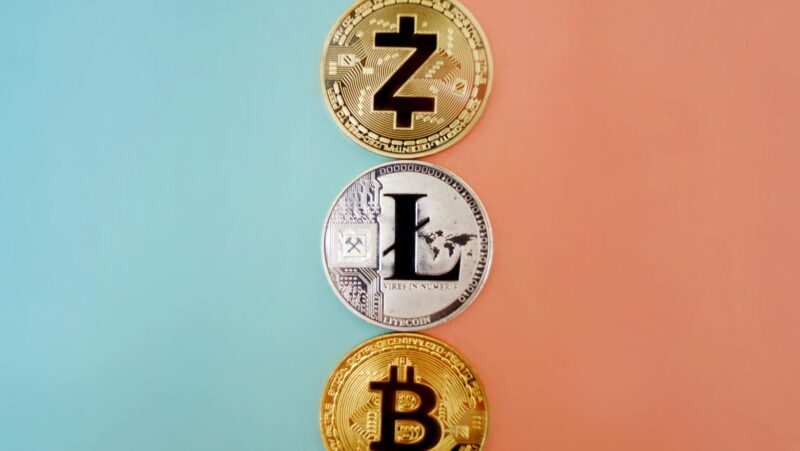
The cryptocurrency sector has matured to a point where observers and stakeholders have begun to consider the possibility of digital assets threatening fiat currencies. Since many of the advantages crypto users enjoy are significant improvements over traditional fiat processes, people continuously compare both industries to determine whether or not the crypto sector is potent enough for a complete disruption.
There are several reasons to consider crypto a worthy contender, considering all of the achievements of major assets like Bitcoin (BTC) and Ether (ETC) over the last few years. However, even the best cheap crypto can threaten fiat’s dominance if it eventually finds enough use cases and adoption. Developers of new cryptocurrencies try to provide improvements on existing assets so that they can contend favorably in a highly competitive sector.
Cryptocurrency Vs. Fiat Currency
A fiat currency is any currency issued by a government. Major fiats include the US dollar, yen, euro, pound and yuan. Fiat currencies are usually controlled by central banks, which have the authority to regulate issuance as needed. A fiat currency relies on the government and depends on it for stability. This type of currency is not backed by any physical commodity like gold.
On the other hand, cryptocurrencies are issued by complex cryptographic algorithms that ensure their security and make them difficult to counterfeit. These virtual currencies rely on blockchain technology, where public details of crypto transactions are recorded.

Decentralized cryptocurrencies have no central authority and cannot be regulated. Issuance depends on participants like miners who are free to produce blocks, provided they have the capacity to do so. The very nature of cryptocurrencies offers perks that are absent in fiat currencies, leading to debates about crypto’s power to threaten fiat.
Threats Cryptocurrencies Pose to Fiat
- Decentralization: Crypto’s decentralization threatens fiat currencies because it promotes financial inclusion and democratizes access to financial aid. Since anyone with an internet connection can own a wallet and buy digital assets, crypto is the best way to bank any region’s unbanked and underbanked population. This decentralization also makes fund transfers and cross-border transactions cheap since there are no intermediaries involved. In the traditional financial sector, cross-border transactions are expensive because several middlemen are sometimes required to complete the transactions. This also increases charges because each intermediary along the way takes a percentage of the transaction.
- Financial Innovation: Cryptocurrencies support financial innovation easier than fiat. Developers behind many cryptocurrencies continuously seek ways to improve the asset, sometimes implementing a hard fork to deploy an upgrade, as with Ethereum’s upcoming Decun upgrade. On the other hand, the capabilities of fiat transactions are severely limited. The adjustments and upgrades possible with digital assets are usually unavailable with fiat.
- Regulatory Control: Most decentralized cryptocurrencies function outside of the government’s reach. Government agencies have limited control of cryptocurrencies and, therefore, do not directly influence the sector. While government policies sometimes affect price trajectory, authorities cannot stop or suspend the blockchain as they can with fiat currencies.
- Inflation Hedge: Many people now consider cryptocurrencies a trusted store value and hedge against inflation. Bitcoin, for instance, has a few deflationary measures, such as a hard limit on the number of tokens that will ever be produced. In addition, the Bitcoin halving event, which happens after every 210,000 blocks (roughly every four years), cuts miner rewards by half. This is another deflationary measure that directly controls the volume of Bitcoin in circulation at any time. On the other hand, fiat currencies easily suffer inflationary problems, which may stem from government policies such as printing more money or lowering interest rates.
Conclusion: How Much of A Threat Are Cryptocurrencies
The many advantages of crypto make it easy to understand why observers believe the sector threatens fiat. However, while there are reasons to assume a danger to fiat dominance, there are also several challenges and limitations to the continued adoption of cryptocurrencies. Firstly, the volatile nature of the average decentralized cryptocurrency makes it difficult for crypto to put up a good fight because the general public might be reluctant to leave their funds in unstable assets. There also is the problem with scalability, as most blockchain networks cannot handle the volume of simultaneous trades possible with fiat currencies. Nonetheless, the continuous improvements in the blockchain sector, especially regarding scalability, put cryptocurrencies in a good position to compete favorably with fiat.











